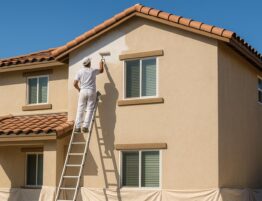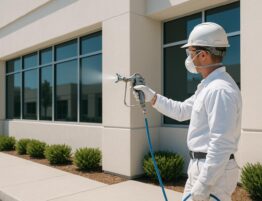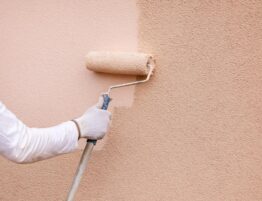
If you’re tired of the outdated wallpaper or textured walls in your home, consider painting over them instead of going through the laborious process of removing them. However, painting over wallpaper or textured surfaces requires extra preparation and attention to detail to ensure your new paint job looks smooth and seamless. In this post, we’ll guide you through the steps you must take to paint over wallpaper or textured surfaces successfully.
Step 1: Prepare the surface
Before painting, you must ensure the surface is clean and free of dirt, dust, or debris. Use a sponge or cloth to wipe down the wallpaper or textured surface with a mild soap and water solution. You may need to use a more robust cleaning solution or a wallpaper cleaner if there are any stubborn stains or spots. Allow the surface to dry completely before moving on to the next step.
Step 2: Smooth out any rough spots
If your wallpaper or textured surface has any rough spots or bumps, you’ll need to sand them down before painting. Use fine-grit sandpaper to gently sand any areas that feel rough or uneven, taking care not to damage the wallpaper or texture. This step will help create a smoother surface for the paint to adhere to. Contact us today to get your free re-texturing estimate.
Step 3: Apply primer
Priming the surface is essential when painting over wallpaper or textured surfaces. A primer helps to seal the surface and provides a smooth, even base for the paint to adhere to. Use a high-quality primer specifically designed for painting over wallpaper or textured surfaces. Apply the primer using a roller or brush, working in small sections to ensure even coverage.
Step 4: Fill in any gaps or cracks
If your wallpaper or textured surface has gaps or cracks, you must fill them in before painting. Use a spackling compound or joint compound to fill in any holes or cracks, using a putty knife to smooth the surface. Allow the mixture to dry completely before sanding it to create a smooth surface.
Step 5: Paint the surface
Once the primer is dry, you can begin painting the surface. Choose a high-quality paint that’s designed for use on wallpaper or textured surfaces. Use a roller or brush to apply the paint in thin, even coats, working in small sections to ensure even coverage. Be sure to allow each coat to dry completely before applying the next one.
Step 6: Finish up
Once you’ve applied the final coat of paint and it’s dried completely, you can remove any tape or plastic sheeting you used to protect surrounding surfaces. Use a damp cloth to wipe down the surface and remove dust or debris. Finally, stand back and admire your newly painted walls!
In conclusion, painting over wallpaper or textured surfaces is possible but requires extra preparation and attention to detail. Following these steps, you can create a smooth, seamless paint job that will make your walls look brand new. Happy painting!
To read more about painting over wallpaper check out this post by Better Homes & Gardens “Can You Paint Over Wallpaper? Here’s What Experts Say”








